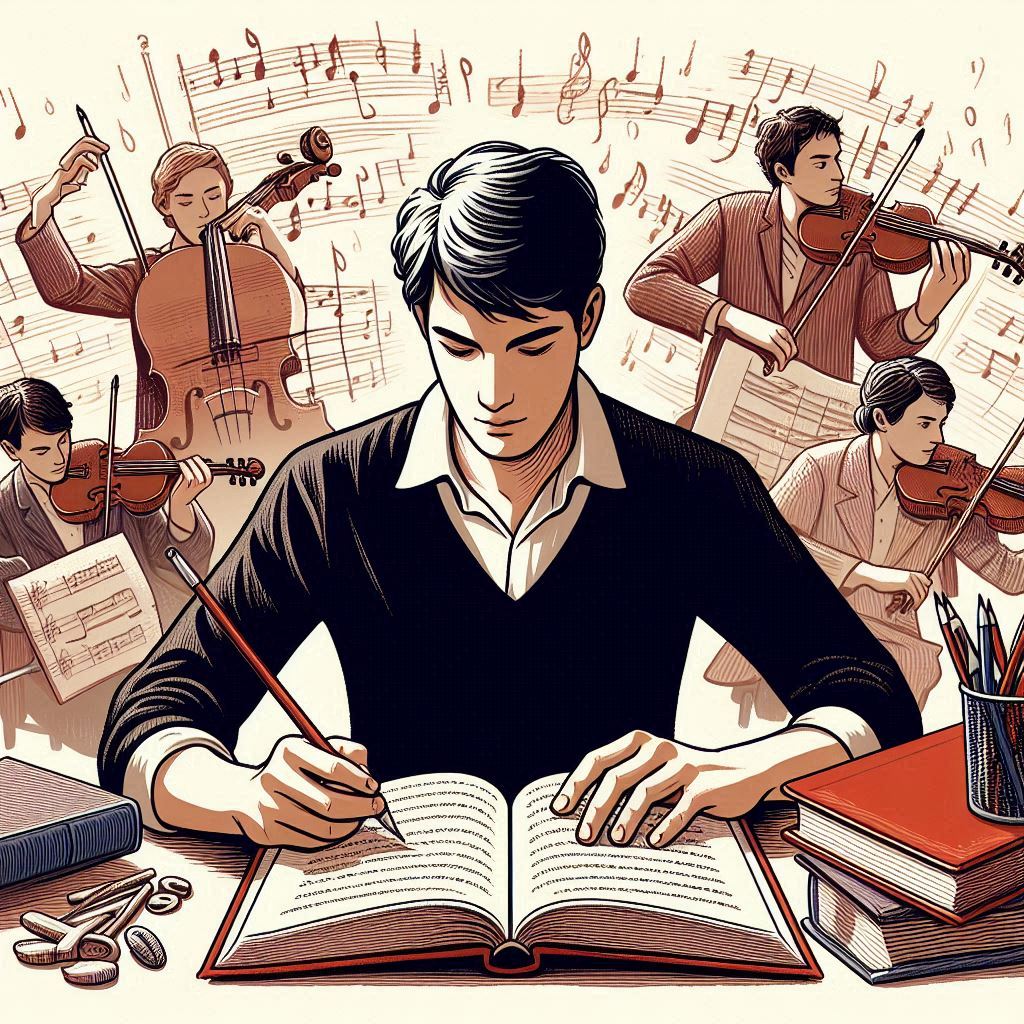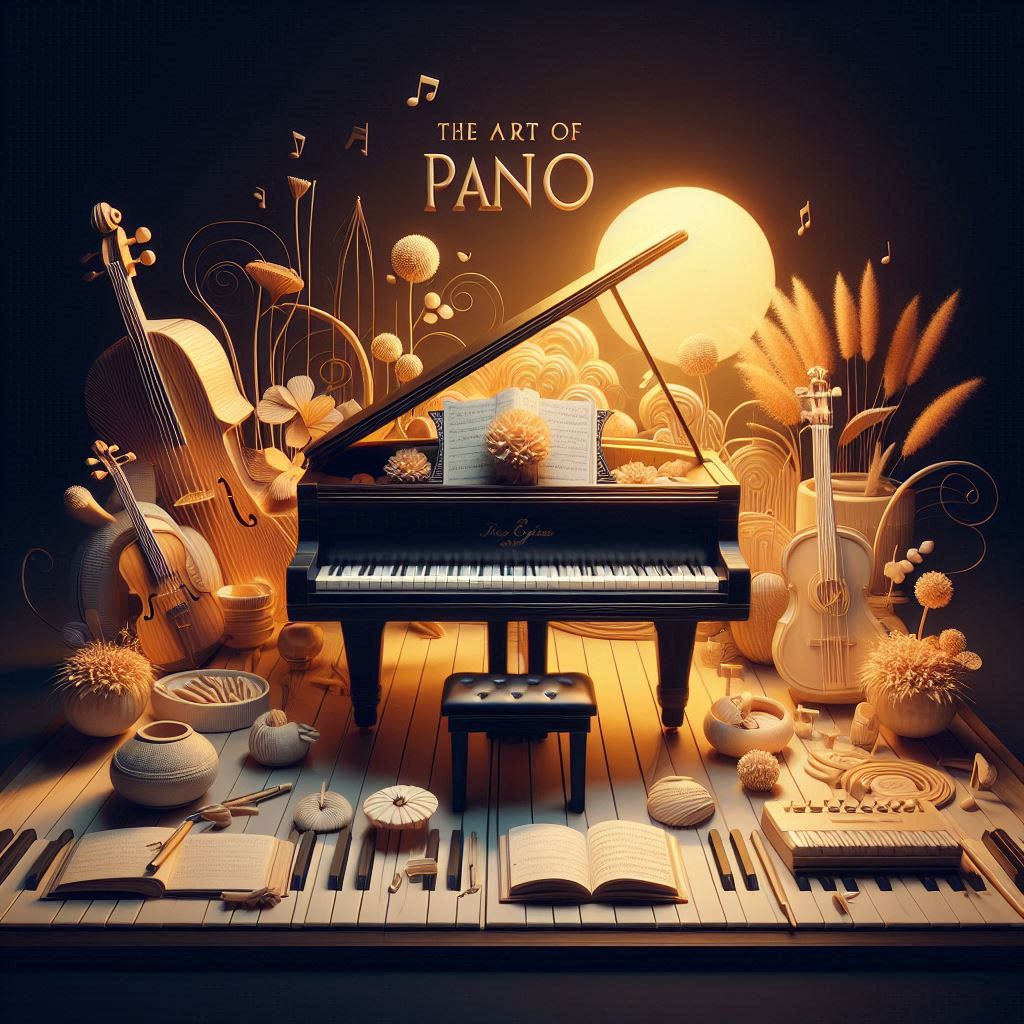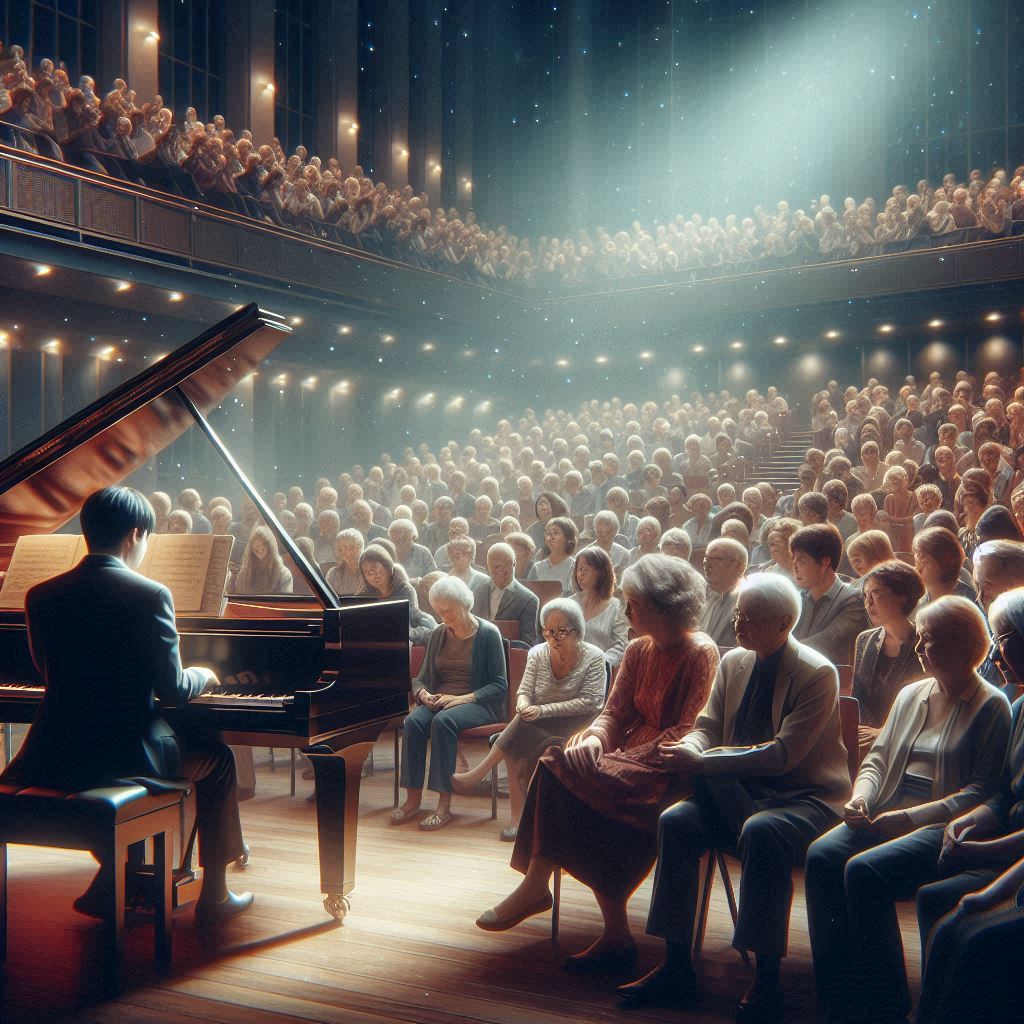Introduction
Writing a book and composing a symphony might seem like entirely different artistic endeavors, but they share many similarities in their creative processes. Both require a deep understanding of structure, a flair for creativity, and an ability to evoke emotions. This blog explores the parallels between writing a book and composing a symphony, highlighting how these two forms of artistic expression intertwine and enrich each other.
1. The Role of Structure
Building Blocks
Both a book and a symphony are built from fundamental building blocks. In a book, these are chapters, paragraphs, and sentences. In a symphony, they are movements, phrases, and notes. Each block must be carefully crafted and integrated to create a cohesive whole.
Example:
- A book might be divided into three acts, each with its own set of chapters that build towards the climax.
- A symphony is typically structured in four movements, each with distinct themes and developments.
Introduction and Theme
In both writing and composing, the introduction sets the tone and presents the main theme. This initial presentation captivates the audience and sets the stage for what follows.
Example:
- In a novel, the first chapter introduces the main characters and central conflict.
- In a symphony, the opening movement introduces the main musical themes that will be developed throughout the piece.
2. Creativity and Innovation
Crafting Unique Voices
Authors and composers strive to create unique voices in their works. For writers, this involves developing distinctive characters and narrative styles. For composers, it involves creating unique melodies and harmonies.
Example:
- A writer might develop a unique voice for each character, using distinct dialogue and inner monologues.
- A composer might create unique instrumental voices, assigning different themes to various instruments or sections.
Experimentation
Both writing and composing involve experimentation. Authors experiment with plot twists, narrative structures, and character development. Composers experiment with harmonies, rhythms, and instrumental combinations.
Example:
- An author might play with non-linear storytelling or multiple perspectives to add depth to the narrative.
- A composer might experiment with unconventional chord progressions or time signatures to create a unique sound.
3. Emotional Expression
Eliciting Emotions
The ultimate goal of both writing and composing is to elicit emotions from the audience. Both art forms use various techniques to evoke feelings of joy, sorrow, tension, and relief.
Example:
- A writer uses descriptive language, dialogue, and pacing to evoke emotions in the reader.
- A composer uses dynamics, tempo, and instrumentation to convey emotions to the listener.
Building Tension and Release
In both a book and a symphony, the artist builds tension and then provides a release, creating a satisfying emotional journey for the audience.
Example:
- A novel builds tension through rising action, leading to a climax, followed by falling action and resolution.
- A symphony builds tension through crescendos and dissonance, leading to a climax, followed by a resolution and a return to harmony.
4. The Creative Process
Inspiration and Ideas
Both writers and composers draw inspiration from various sources, including personal experiences, nature, and other works of art. The initial idea often evolves into a complex and multifaceted creation.
Example:
- An author might be inspired by a historical event or a personal experience to write a novel.
- A composer might be inspired by a landscape or a poem to create a musical piece.
Drafting and Revising
The creative process involves drafting and revising. Writers go through multiple drafts, refining their prose and developing their characters. Composers revise their scores, refining melodies and harmonies.
Example:
- An author might write several drafts, each time improving the plot, characters, and dialogue.
- A composer might revise a symphony multiple times, adjusting the orchestration and refining the musical themes.
Feedback and Collaboration
Both writers and composers benefit from feedback and collaboration. Authors work with editors and beta readers, while composers collaborate with conductors and musicians.
Example:
- An author receives feedback from an editor and beta readers, which helps improve the manuscript.
- A composer receives feedback from musicians and conductors, which helps refine the score and improve the performance.
5. The Final Performance
Publication and Premiere
The culmination of the creative process is the final performance. For writers, this is the publication of their book. For composers, it is the premiere of their symphony.
Example:
- An author publishes their novel, making it available to readers worldwide.
- A composer premieres their symphony, presenting it to an audience for the first time.
Audience Reception
Both authors and composers await audience reception with anticipation. Positive feedback and emotional reactions validate the artist’s efforts and creativity.
Example:
- An author reads reviews and receives feedback from readers, gaining insight into how their work was received.
- A composer listens to audience applause and receives feedback from listeners, understanding the impact of their music.
FAQs
How is writing a book similar to composing a symphony?
Both involve creating a structured, cohesive work from fundamental building blocks, requiring creativity, emotional expression, and an iterative process of drafting and revising.
What role does structure play in both writing and composing?
Structure is crucial in both fields, providing the framework within which the work is developed. In writing, it includes chapters and acts; in composing, it includes movements and phrases.
How do writers and composers use experimentation in their work?
Writers experiment with narrative techniques, character development, and plot structures. Composers experiment with melodies, harmonies, rhythms, and instrumentation.
What are some common sources of inspiration for writers and composers?
Both draw inspiration from personal experiences, nature, other works of art, historical events, and emotional journeys.
How do feedback and collaboration enhance the creative process?
Feedback and collaboration provide valuable insights and perspectives, helping refine and improve the work. Writers work with editors and beta readers, while composers collaborate with musicians and conductors.
What is the significance of the final performance in writing and composing?
The final performance, whether it is the publication of a book or the premiere of a symphony, is the culmination of the creative process and an opportunity to share the work with an audience.
Conclusion
Writing a book and composing a symphony are deeply interconnected artistic processes that share many similarities. Both require a strong sense of structure, a flair for creativity, and the ability to evoke emotions. By understanding these parallels, writers and composers can draw inspiration from each other, enhancing their own creative endeavors. Whether you are crafting a novel or composing a musical masterpiece, embracing the symphonic nature of your work can lead to richer, more impactful creations.



